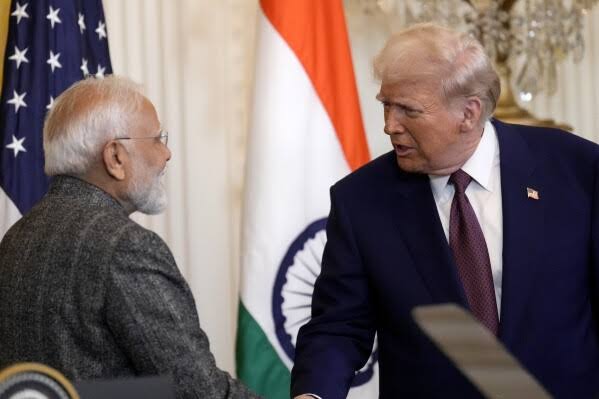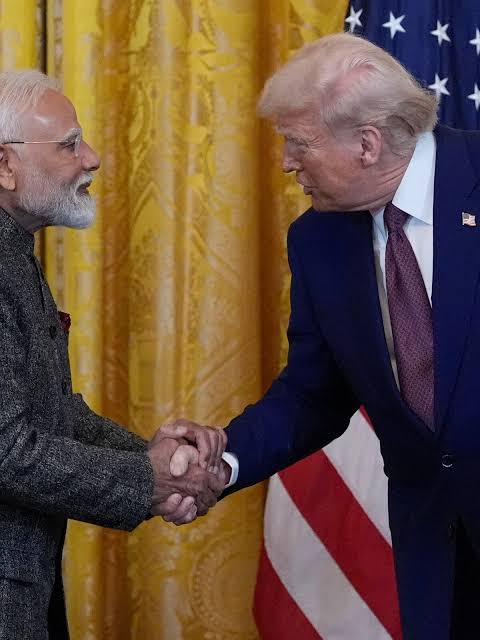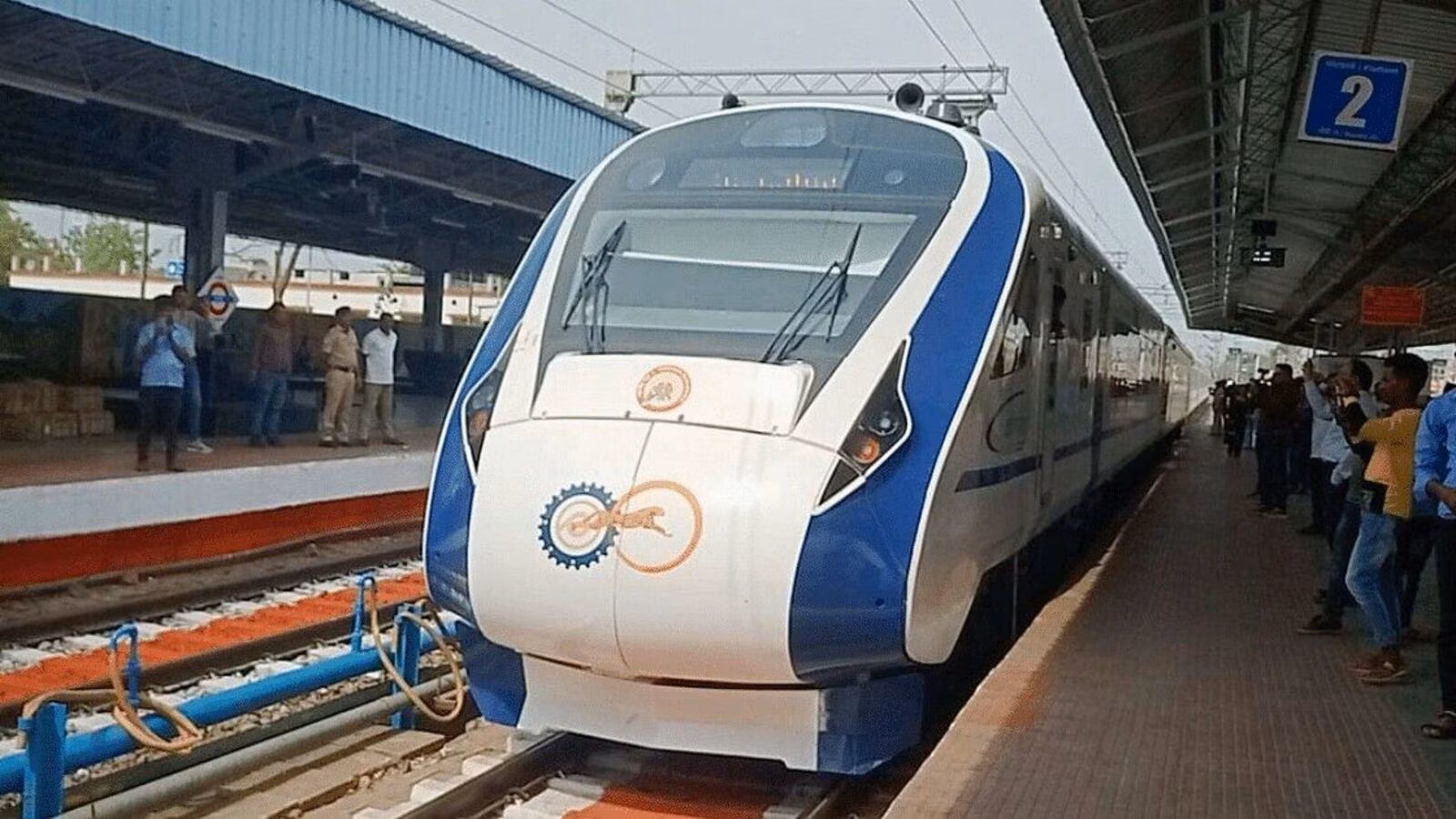When Narendra Modi visited Donald Trump last week, the usual warmth that once defined their public interactions was noticeably absent. The exuberant bear hugs and hand-holding gestures that marked their past meetings, including the grand “Howdy Modi” event in 2019, were replaced by a more restrained diplomatic exchange. The Indian Prime Minister arrived with trade concessions, hoping to smooth over economic frictions, but Trump countered with a hard line on tariffs that could severely impact India’s exports.
 Just before their meeting, Trump set the tone by announcing reciprocal tariffs, a move that ensures U.S. duties on imports will match those imposed by other nations on American goods. While Trump had long hinted at broad trade levies, this version of his policy is particularly concerning for India. Economists at Kotak Mahindra Bank estimate that nine of India’s top ten exports to the U.S.—including iron, steel, auto parts, and precious stones—will face tariffs rising by 6 to 24 percentage points. This could significantly erode India’s competitiveness in one of its largest foreign markets.
Just before their meeting, Trump set the tone by announcing reciprocal tariffs, a move that ensures U.S. duties on imports will match those imposed by other nations on American goods. While Trump had long hinted at broad trade levies, this version of his policy is particularly concerning for India. Economists at Kotak Mahindra Bank estimate that nine of India’s top ten exports to the U.S.—including iron, steel, auto parts, and precious stones—will face tariffs rising by 6 to 24 percentage points. This could significantly erode India’s competitiveness in one of its largest foreign markets.
The immediate fallout has already begun to show. The Indian rupee faces additional pressure, with foreign investors potentially pulling out even more capital, exacerbating the nearly $11 billion outflow recorded this quarter. If this trend continues, it could complicate India’s ability to cut interest rates at a time when economic growth is already slowing. Domestic retail investors, who have so far helped sustain market confidence, are also growing cautious, with leading fund managers advising against small-cap investments in the current climate.
With reciprocal tariffs set to take effect following a trade review in April, Modi has a small window to negotiate a deal that could soften the blow. However, such a deal would likely require further concessions, including regulatory changes to accommodate Elon Musk’s Starlink broadband service. Additionally, the U.S. is pressuring India to increase its purchases of American military equipment, including the advanced F-35 fighter jets. India has already agreed to modify a long-standing civil liability law that has hindered Westinghouse Electric’s nuclear power projects for over a decade, demonstrating its willingness to compromise.
Beyond tariffs, Trump’s trade agenda could impose even broader challenges. His administration is scrutinizing foreign regulations, subsidies, exchange rates, and intellectual property laws, potentially forcing India to make further adjustments. While some of these changes might push Indian firms to become more competitive, they also threaten to disrupt well-established industries and trade practices.
One of the biggest concerns is energy security. Trump is pushing for greater U.S. oil and gas exports to India, which already imports half of its liquefied natural gas (LNG) needs from Gulf nations. If Indian industries—particularly fertilizer, petrochemicals, and steel—are compelled to increase American LNG purchases, the added transportation costs could significantly inflate the country’s import bill. This comes at a time when India is actively promoting green energy alternatives, such as solar and wind-powered hydrogen, to reduce dependence on fossil fuels.
At their joint press conference, Trump spoke optimistically about strengthening trade routes between India, the Middle East, and Europe, reviving discussions on an economic corridor that had been stalled since 2023. This could benefit Indian infrastructure magnates like Gautam Adani, who has significant port interests in Israel and expansion plans in Europe. However, lingering corruption allegations against Adani in the U.S., though denied by his company, cast a shadow over his international ventures. Modi downplayed these legal troubles, calling them a “personal matter” that should not influence diplomatic discussions.
Despite the broader economic concerns, Modi secured a small but symbolic victory: Trump agreed to extradite a key suspect wanted for the 2008 Mumbai terror attacks. However, the Indian Prime Minister did not mention any assurances regarding the treatment of Indian deportees from the U.S., an issue of growing concern. The recent return of 104 undocumented Indian migrants, many from Modi’s home state of Gujarat, in a military aircraft—handcuffed and in chains—raised serious humanitarian questions.
As Modi navigates the complex web of U.S.-India trade relations, the stakes remain high. While the Prime Minister has built a reputation for forging strong international ties, Trump’s transactional approach to diplomacy presents new challenges. With India’s economic growth, stock market stability, and investor confidence hanging in the balance, the coming months will test Modi’s ability to safeguard India’s interests while maintaining a crucial strategic partnership.



